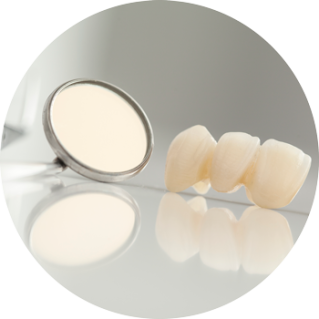
Bridges are one of the fixed dental prostheses. This variation of dental prosthesis is closest to the original, natural dentition; and therefore is able to almost completely recreate the normal chewing and speaking functions, unlike removable dental prostheses. Thanks to the most state-of-the-art technologies it is possible to produce a bridge from aesthetic ceramic material, which looks natural and is very long-lasting.
The bridge is a form of dental prosthesis which is supported only by teeth, tooth roots or tooth implants. The artificial dental prosthesis “bridges” an existing gap. The artificial teeth are attached using bridge abutments (anchors), crowns or partial crowns.

For reasons of stability, a bridge usually does not replace more than four teeth, as the abutment teeth are subjected to unnecessary pressure and it cannot be guaranteed that the bridge sits securely.
The biggest advantage of this dental prosthesis method is the relatively low effort involved. The treatment is also generally a complete success from both aesthetic and functional points of view. A disadvantage is the milling of healthy tooth substance, which is necessary to anchor the bridge. Possible caries formation at the edge of the crown and possible overloading of the abutment teeth can also be seen as treatment disadvantages.